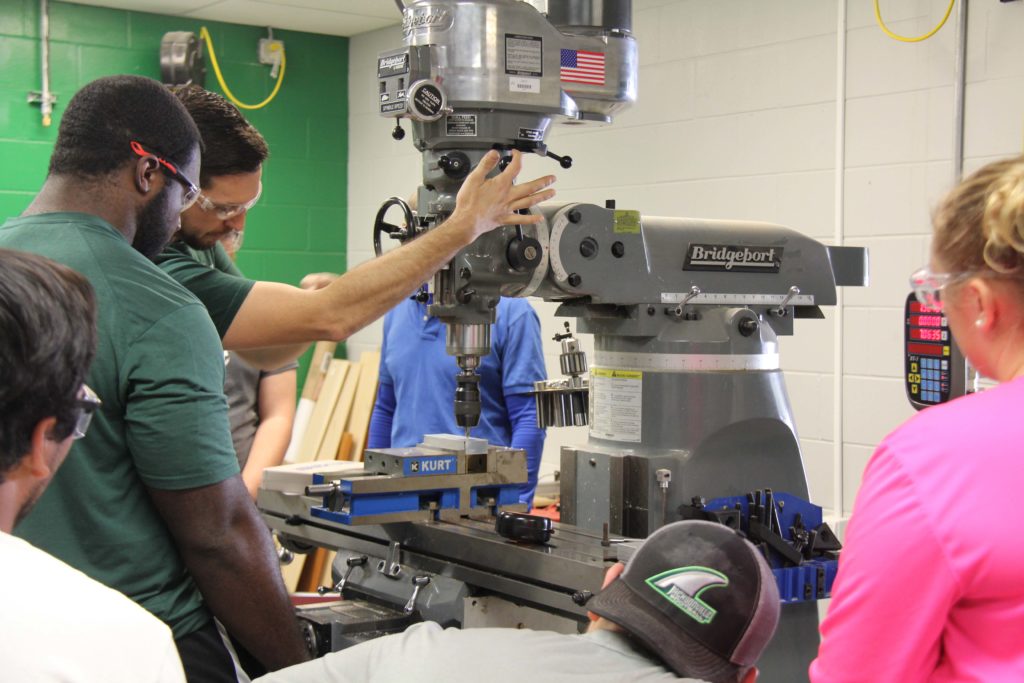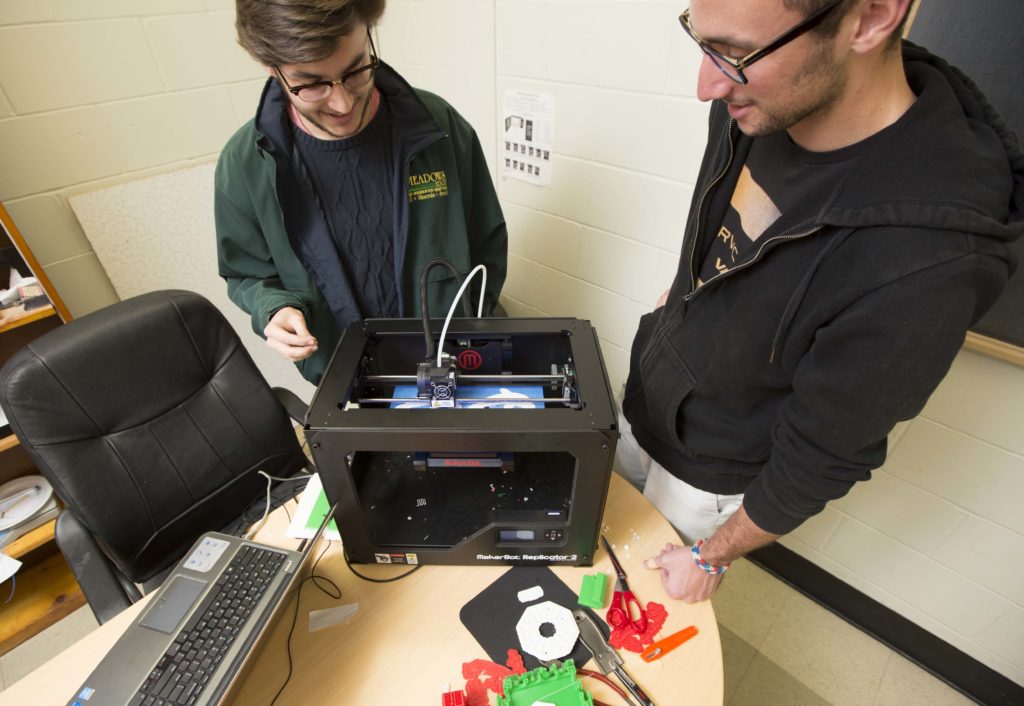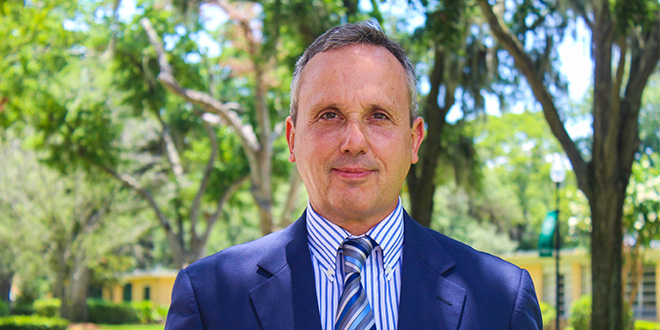For decades, we have heard about the importance of STEM education in the U.S. — to the point where it has become ubiquitous. In the race to compete globally, as other countries continue to churn out coders, doctors, engineers and scientists, the U.S. has placed a supreme value on educating more students in high-demand technical fields.
However — like many well-intended movements that gain momentum — there comes a time to challenge widely-accepted notions and to explore ways to strengthen them. That is exactly what Jacksonville University intends to do, arguing that an education solely focused on Science, Technology, Engineering and Math is missing one critical element: the Arts.
Enter Dr. Murat Tiryakioglu, a well-respected engineer with expertise in mechanical engineering, advanced manufacturing and materials innovation. He joined the JU faculty this summer with the charge of reimagining STEM.
As he prepares to infuse the Arts into technical programs — and works to create a physical space on campus where this intersection comes to life — WAVE sat down with him to better understand the importance of this transformational initiative many are calling STEAM.
WAVE: Tell us more about your new role and your mission here at JU.
Dr. Tiryakioglu: “I’m here to help give guidance. I am more like an internal consultant, an advisor on how to best educate students in STEM fields. We want them to have multiple skills, be more flexible, think in different ways, be creative. We want them to see opportunities for improvement, new businesses, new products — to keep thinking critically every day and keep developing solutions. In turn, they can have multiple careers, or they might set up their own businesses and become entrepreneurs.”
“If we’re going to do this, we have to have major design experience every year to engage the students.”
WAVE: What’s missing from STEM education today?
Dr. Tiryakioglu: “Unfortunately in our country, students are being programed to do math and science a certain way, so there’s no creativity involved. Students are programed to mimic what we’re teaching them and then, when the course is over, flush their memory. That becomes a very ineffective and inefficient learning and teaching style. But when you infuse it with creativity, you turn students into active learners.”
“Engineers, for example, are supposed to be problem solvers. But, usually when you mention problem solving to an engineer they think of the end-of-the-chapter problems — a well-defined problem. The students are supposed to use an equation or follow a procedure. All the data are available. All they need to do is take the numbers, plug them into an equation and come up with an answer.”
“But that doesn’t exist in the real world. The real world says, ‘I have pain here. I don’t know what the problem is.’ And the typical engineering education does not teach students how to identify a problem — how to define a problem.”
WAVE: What’s your plan to change that approach?
Dr. Tiryakioglu: “Create more opportunities for critical thinking. Critical thinking in the engineering discipline is basically design. There’s a problem. Nothing currently exists to solve that problem. So let’s design a product, or process, or maybe a procedure to alleviate that problem. If we’re going to do this, we have to have major design experience every year to engage the students and get them to think differently, to think creatively, and train them how to ask the right questions.”

“Traditional engineering programs are viewed as two years of the ‘death march,’ which is all science and math. Followed by two years of the engineering ‘desert,’ because it’s so dry. It’s a huge problem. Close to half of students drop out after Calculus I. These are students who have interest — who want to become engineers. But in most programs, all the classroom work comes first and then the hands-on piece — if you get to the hands-on piece at all. I never got to the hands-on piece when I went through my mechanical engineering education.”
“I call it creativity-infused STEM education.”
WAVE: Would you say your own college experience greatly impacted your perspective on this?
Dr. Tiryakioglu: “Definitely. It was all pretty analytical and theoretical and I got bored to death. I was not motivated to do that kind of thing. I wanted to do more.”
WAVE: But you’re clearly very passionate about your field today. What changed for you?
Dr. Tiryakioglu: “Well, I saw what it can do for students. After I got my PhD, I worked in aerospace for a while and then I switched to academia. When I started teaching at Robert Morris University in Pittsburgh, we had a lot of competition — Carnegie Mellon, University of Pittsburgh, and the Penn State system. So we had to do something unique to survive. We decided to have a lab component for every course, including courses like statistics that don’t usually have a lab component. It forced me to think of things I could do that would be meaningful for the students.”
“After a few tries, I managed to bore my students to death — and myself. I finally said ‘OK I’m going to get out of the classroom. Let’s go do some service learning.’ So we went to small manufacturers and said ‘Where’s the pain? What are you struggling with? Let’s work on that.’ I brought some projects into the classroom and all of sudden I saw my students come alive — even those struggling with the coursework. I knew I had tapped into something unique: intrinsic motivation, in which the reward for the activity is the activity itself. Then it became very clear what I needed to do. I know how important service learning is at JU. And that’s one of the things that gets me going. So I can’t wait to do more of it on this campus.”

WAVE: You’re working with JU leadership to eventually create a physical space here on campus dedicated to STEAM. Why is it so important to have a physical space where the Arts can integrate with technical fields?
Dr. Tiryakioglu: “It’s important because thinking minds feed each other. It’s important to have that space to bring an idea to life and involve other people. Have it vetted. Discuss it, and maybe bring in mentors from outside to ask pointed questions about how you came up with that idea and how you’re going to turn it into reality and what’s involved. That kind of design review — or scrutiny — brings out the best in people. We are going to have plenty of creative space for students from multiple programs to come together and work on projects. Students will be able to think about a concept, design it, and bring it to life in the makers space right next to them. I call it creativity-infused STEM education.”
 Wave Magazine Online Jacksonville University News Hub
Wave Magazine Online Jacksonville University News Hub
